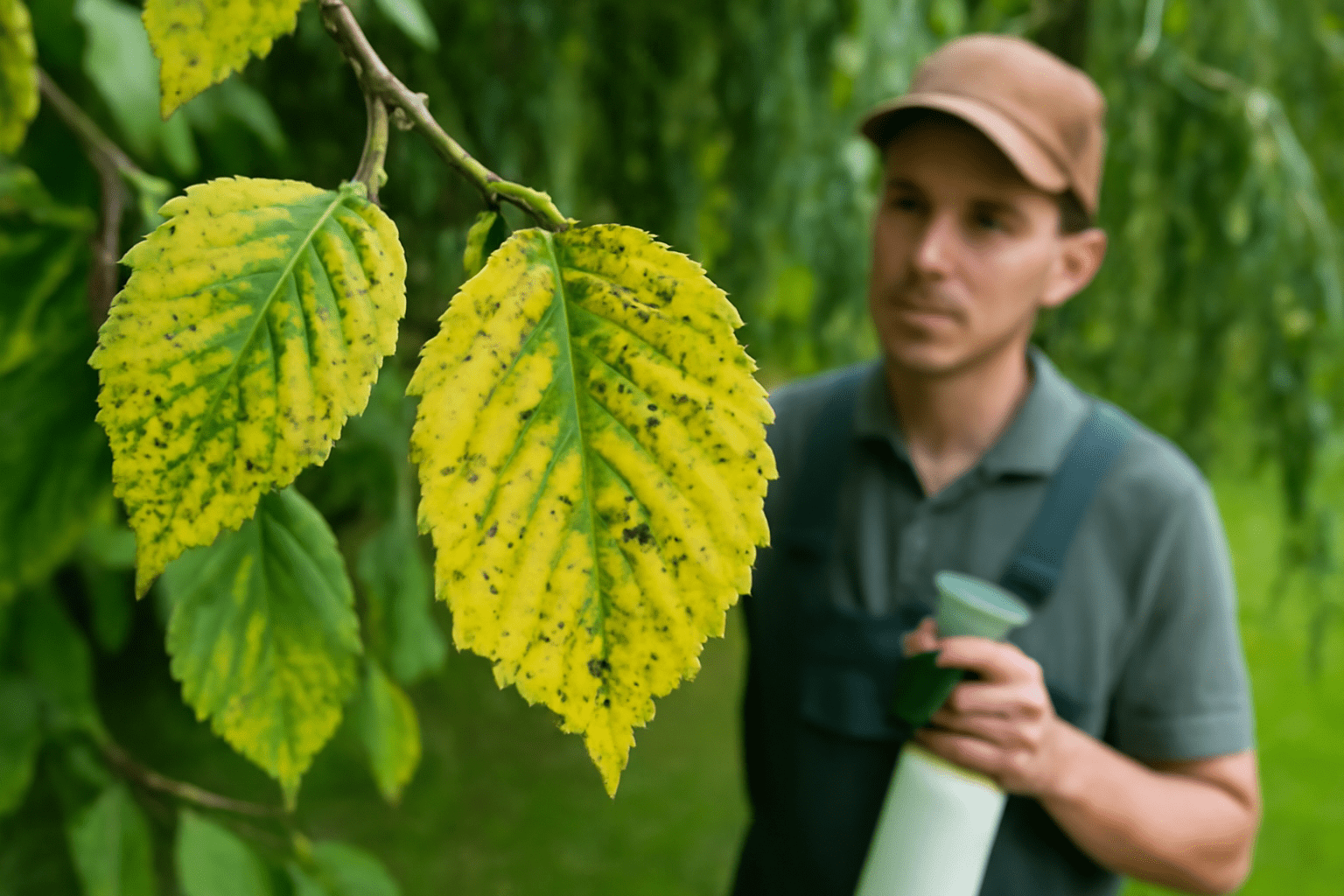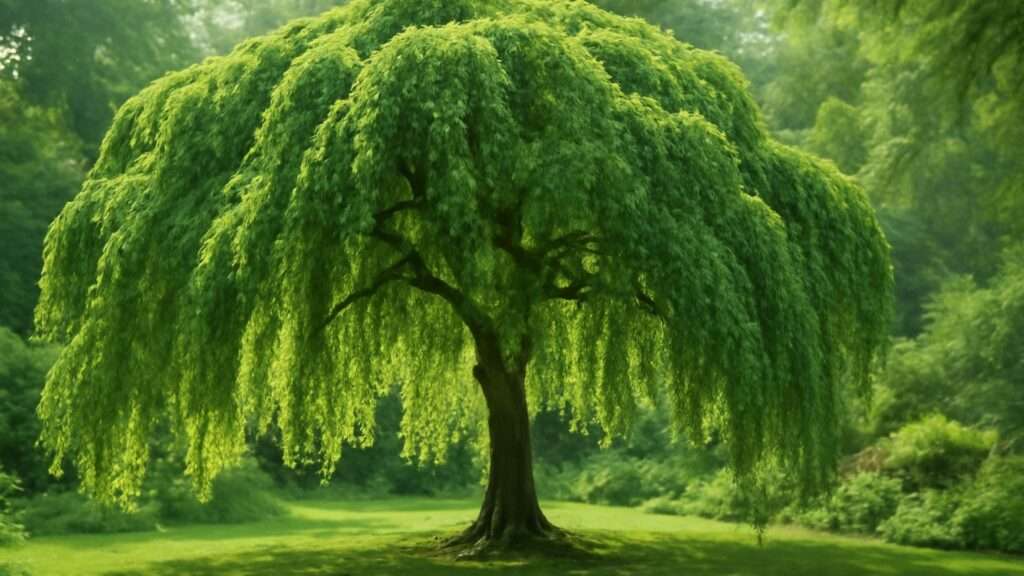
How to Care for a Weeping Beech Tree: Expert Tips for Healthy Growth and Maintenance
Imagine a tree with cascading branches that create a stunning, weeping canopy of lush green leaves—a true focal point in any garden. 
If you’re looking to add this unique tree to your landscape or already have one that needs a little extra love, you’re in the right place! In this ultimate guide, we’ll walk you through everything you need to know about caring for your Weeping Beech Tree, from planting tips to pruning and maintenance. Whether you’re a first-time gardener or a seasoned pro, you’ll find practical, easy-to-follow advice that ensures your tree grows strong, healthy, and continues to impress year after year. Keep reading to learn how to make the most out of this captivating tree!
Table of Contents
ToggleUnderstanding the Weeping Beech Tree: A Beautiful Garden Addition 

The Weeping Beech Tree (Fagus sylvatica ‘Pendula’) is a stunning tree known for its unique, cascading branches that create a graceful, flowing silhouette. This tree is a fantastic addition to any garden or landscape, offering not only visual appeal but also a sense of tranquility. If you’re considering adding one to your yard, here’s everything you need to know about this striking tree and how it can enhance your outdoor space.
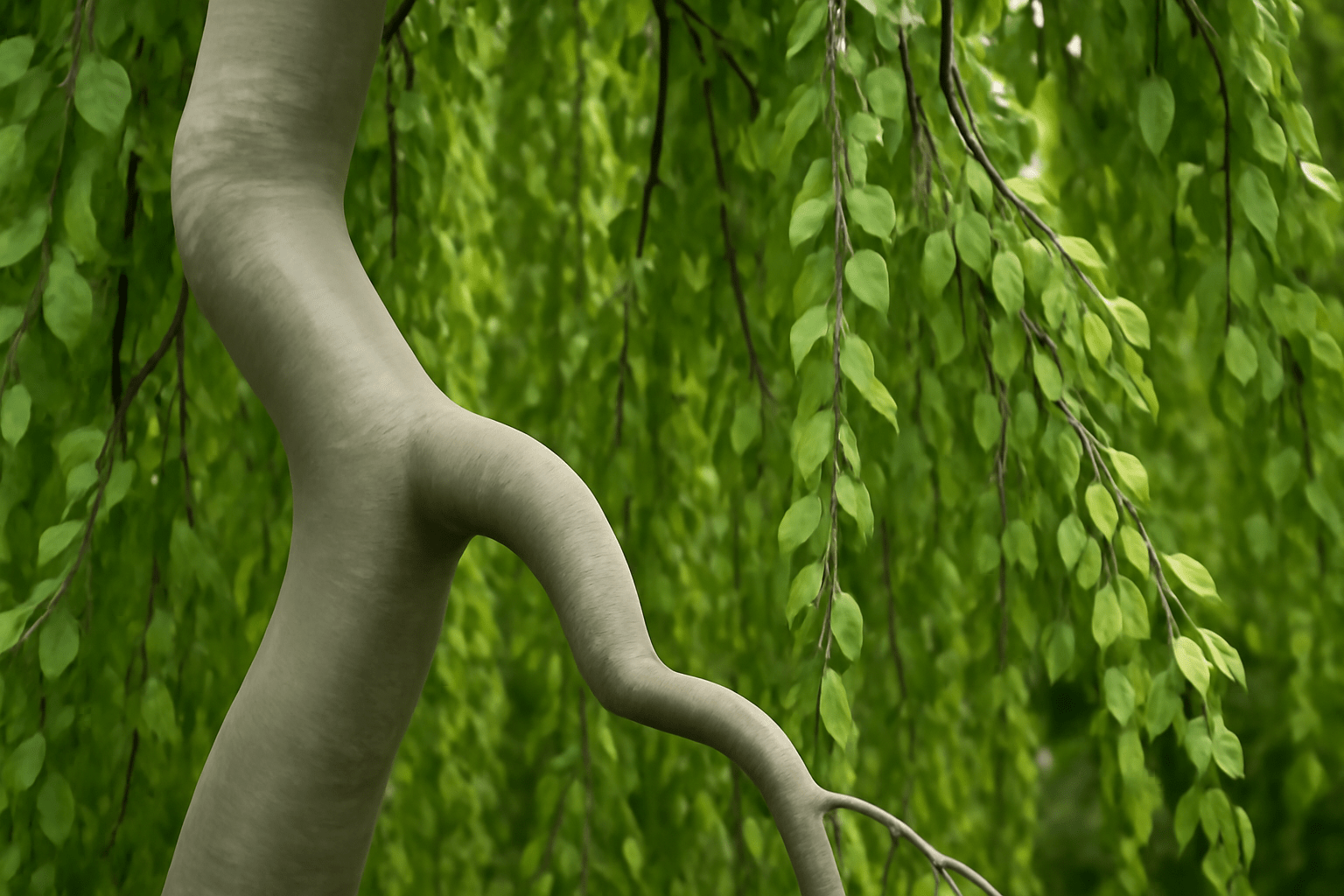
What Makes the Weeping Beech Tree Special?
The Weeping Beech is renowned for its beautiful, drooping branches that give it a weeping effect. Its smooth gray bark and dense green foliage create a striking contrast in any garden. During the fall, its leaves transform into rich golden hues, adding a burst of color to your landscape.

This tree is ideal for spacious gardens or as a standalone feature tree. Its elegant form can act as a focal point, drawing attention while complementing other plants or structures.
Growing the Weeping Beech Tree 
While the Weeping Beech is relatively low-maintenance, it does have some specific care needs to thrive. Here are a few tips:
- Location: It prefers full sun to partial shade. Ensure it has enough space to grow, as it can reach heights of up to 30 feet (9 meters) and spread up to 25 feet (7.6 meters) wide.
- Soil: The Weeping Beech thrives in well-drained, slightly acidic soil. It does best when planted in areas with good water retention but not soggy soil.
- Watering: Keep the soil moist but not waterlogged. Water deeply during dry spells to encourage healthy growth.
- Pruning: Although it requires minimal pruning, occasional trimming will help maintain its graceful form. Prune in late winter or early spring before new growth begins.
Why Choose the Weeping Beech Tree? 
Adding a Weeping Beech to your garden can bring several benefits:
- Aesthetic Appeal: Its unique shape and fall color make it a standout feature.
- Shade Provider: It offers ample shade, perfect for relaxation or cooling down hot garden areas.
- Wildlife Friendly: The tree can support various wildlife, offering shelter and food to birds and insects.
By choosing a Weeping Beech Tree, you’re not only improving the look of your garden but also creating a serene and inviting space.
So, if you’re looking for a tree that adds both beauty and functionality to your landscape, the Weeping Beech Tree is a fantastic option!
Ideal Growing Conditions for Your Weeping Beech Tree 
If you’re thinking about planting a Weeping Beech Tree (Fagus sylvatica ‘Pendula’) in your garden, choosing the right growing conditions is key to ensuring it thrives. Let’s break it down with simple, actionable advice that will help your tree grow strong and healthy.
1. Location: Give It Space! 
The Weeping Beech Tree is a stunning, large tree that needs plenty of room to grow. Choose a spot with ample space to allow its graceful, weeping branches to spread. Ideally, plant it in an area with at least 20 feet of clearance from buildings, other trees, and overhead wires. This tree is perfect for large gardens or parks where it can reach its full potential!

2. Sunlight: Sun Worshipper 
Weeping Beeches thrive in full sun but can tolerate partial shade. For optimal growth and to enjoy that beautiful weeping form, aim for at least 6 hours of direct sunlight a day. In shadier spots, your tree may grow slower and its form might be less impressive, so give it a sunny spot for the best results!
3. Soil: Well-Drained, Moist Soil 
These trees prefer moist, well-drained soil that’s rich in organic matter. Make sure the soil is slightly acidic to neutral (pH 5.5 to 7.0). Avoid areas where water tends to pool, as Weeping Beeches do not like “wet feet.” If you have clay-heavy or compacted soil, improve drainage by adding organic compost or sand before planting.
4. Watering: Keep It Hydrated 
Weeping Beech Trees like consistent moisture, especially during their first few years of growth. Water them deeply during dry spells, but avoid overwatering as this can lead to root rot. Once established, the tree is fairly drought-tolerant, but regular watering during summer months will keep it happy and healthy.
5. Protection from Wind: Shelter It 
Due to its graceful, weeping branches, this tree can be susceptible to wind damage. If you live in a windy area, consider planting your Weeping Beech near a natural windbreak or fence. This will protect its delicate branches and help it maintain its shape and strength.
By following these easy tips, your Weeping Beech Tree will grow into a majestic focal point in your garden, offering shade, beauty, and character for years to come.
Planting Your Weeping Beech Tree: A Step-by-Step Guide 
Planting a weeping beech tree (Fagus sylvatica ‘Pendula’) is an exciting way to enhance your garden with its stunning, cascading branches and lush foliage. However, like any tree, it requires proper care and attention to thrive. Follow these simple, step-by-step instructions to plant your weeping beech tree with confidence!
1. Choose the Right Spot 
Weeping beeches prefer full sunlight but can tolerate some shade. Find a location that gets at least 4-6 hours of direct sunlight each day. The soil should be well-drained and slightly acidic, so avoid low spots where water might collect.
2. Prepare the Soil 
Before planting, improve the soil by loosening it with a shovel or garden fork. If your soil is heavy clay, mix in some organic compost to help with drainage and fertility. This will provide the perfect environment for your tree’s roots to grow strong.
3. Dig the Hole 
Dig a hole that’s about twice the size of the root ball of your weeping beech tree. Make sure the hole is deep enough to allow the top of the root ball to be level with the ground surface. This helps the roots establish properly.
4. Place the Tree in the Hole 
Gently remove the tree from its container and place it in the center of the hole. Hold the tree steady, ensuring the root ball sits evenly. Avoid burying the tree too deep; it’s better to have the roots slightly above the ground level to prevent water from collecting around the base.
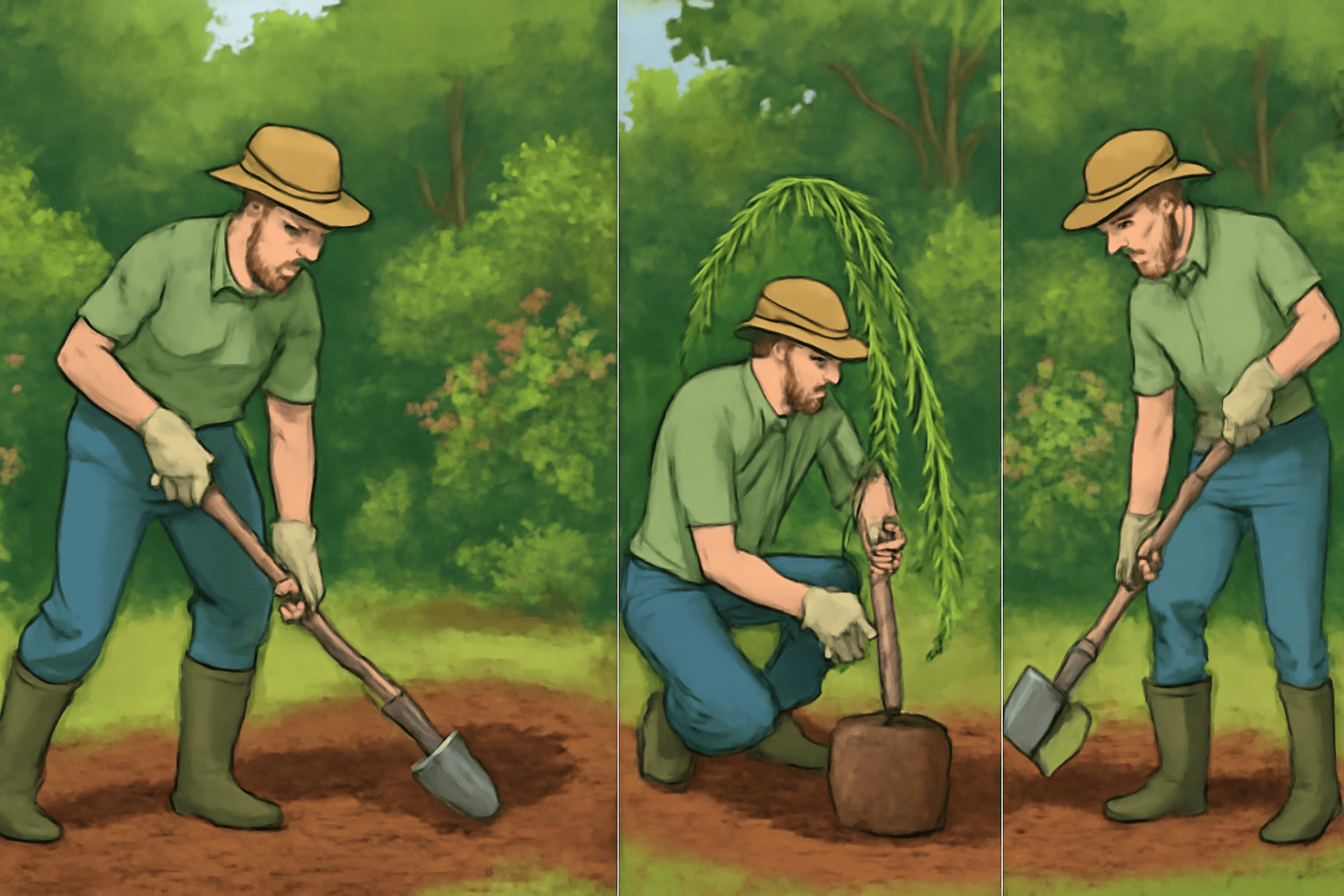
5. Backfill with Soil 
Fill the hole with the soil you removed, making sure to eliminate any air pockets by gently pressing the soil around the roots. Water the area well as you backfill to help the roots settle in.
6. Water Regularly 
Once your weeping beech is planted, it’s crucial to keep the soil consistently moist—especially during the first few months. Be careful not to overwater, as this can lead to root rot. A deep watering every 2-3 days is ideal until the tree is established.
7. Mulch to Retain Moisture 
Apply a 2-3 inch layer of mulch around the base of the tree, but not directly touching the trunk. Mulch helps retain moisture, suppress weeds, and regulate soil temperature, ensuring your tree stays healthy.
8. Prune Gently for Shape 
After planting, allow your weeping beech tree to naturally grow. However, if you notice any broken or dead branches, remove them. Pruning too much can stress the tree, so be sure to wait until it has established a solid root system before any major shaping.
9. Be Patient 
Your weeping beech will grow slowly at first. Don’t rush it! With proper care, it will develop into a magnificent tree that will provide beauty and shade for years to come.
By following these simple steps, your weeping beech tree will have a strong foundation to grow into a beautiful addition to your garden. Remember, consistency is key! Happy planting!
Caring for Your Weeping Beech Tree: Maintenance Tips 
Weeping Beech trees are stunning additions to any garden, but they do require some specific care to maintain their beauty and health. Whether you’re a first-time gardener or a seasoned pro, these tips will help ensure your tree thrives for years to come.
1. Watering 
Weeping Beech trees love moisture but hate soggy feet. Make sure the soil is well-drained and consistently moist, especially during the growing season. Water deeply, once a week, during dry spells. If your tree is young, ensure the soil doesn’t dry out too quickly. In winter, reduce watering but don’t let the soil completely dry out.

2. Pruning 
Pruning helps maintain the tree’s shape and remove any dead or damaged branches. For the best results, prune in late winter or early spring before new growth begins. Be sure to remove any branches that rub against each other or cross over, as these can cause damage as they grow. Always use clean, sharp tools to avoid spreading disease.
3. Mulching 
Mulching is essential for maintaining a healthy Weeping Beech. Apply a 2-4 inch layer of organic mulch around the base of the tree, extending to the drip line. Mulch helps retain moisture, suppresses weeds, and keeps the roots cool in the summer and insulated in the winter. Be careful not to pile mulch directly against the tree’s trunk to avoid rot.
4. Fertilizing 
Weeping Beech trees don’t need much fertilization, but applying a balanced, slow-release fertilizer in early spring can promote healthy growth. Avoid over-fertilizing, as this can lead to excessive growth that weakens the tree. A little goes a long way—aim for a gentle feed rather than a heavy dose.
5. Protecting from Pests and Diseases 
While Weeping Beeches are relatively pest-resistant, it’s always a good idea to keep an eye out for any signs of trouble. Look for yellowing leaves, spots, or strange growths. Aphids and scale insects may appear, but they can be controlled with natural remedies like neem oil. Fungal diseases like powdery mildew are also possible, so ensure good air circulation around the tree by avoiding overcrowding.
6. Winter Care 
Weeping Beeches are hardy, but young trees can be vulnerable to extreme winter conditions. If you live in an area with harsh winters, protect your tree by wrapping the trunk with burlap to shield it from frost damage. Also, ensure that the soil doesn’t freeze completely by applying mulch before the first freeze.
By following these simple yet effective maintenance tips, your Weeping Beech tree will stay healthy, vibrant, and continue to be a beautiful focal point in your garden for years to come.
Common Problems and Solutions for Weeping Beech Trees 
Weeping Beech trees are beautiful, but like all trees, they can face a few challenges. Here are some common problems you might encounter and how to fix them. Don’t worry, with a bit of care, your tree will thrive!
1. Yellowing Leaves (Chlorosis) 
Problem: Yellow leaves can be a sign that your Weeping Beech is stressed. This is often due to poor soil drainage, nutrient deficiencies, or watering issues.
Solution:
- Check Soil Drainage: Ensure the soil is well-draining. If it’s too compacted, your tree might not be getting enough oxygen at the roots.
- Fertilize: Use a balanced fertilizer in early spring to provide essential nutrients. Consider adding iron chelate if the yellowing is due to iron deficiency.
- Proper Watering: Water deeply but infrequently, allowing the soil to dry slightly between waterings. Avoid overwatering.
2. Leaf Spot Disease 
Problem: Dark spots or lesions on the leaves are a common sign of fungal leaf spot diseases, which thrive in humid conditions.
Solution:
- Prune Infected Leaves: Remove any affected leaves and dispose of them properly to prevent the disease from spreading.
- Improve Air Circulation: Space your tree adequately and prune any dense branches to improve airflow around the foliage.
- Fungicide Treatment: If the problem persists, apply a fungicide as per the instructions to control the spread.
3. Weeping Branches Drooping Too Low 
Problem: While the drooping branches are part of the tree’s charm, sometimes they can get too low, making it hard to walk under or causing the tree to look unbalanced.
Solution:
- Prune Gently: Carefully trim the branches that have grown too long, but avoid cutting too much at once. This will help maintain the graceful weeping shape.
- Support with Stakes: If the branches are getting too heavy, use stakes to provide support until they become sturdier.
4. Pests and Insects 
Problem: Common pests like aphids, spider mites, and scale insects can damage your Weeping Beech by feeding on its sap.
Solution:
- Check Regularly: Inspect your tree for any signs of pests, such as sticky sap or webbing. Catching them early can prevent further damage.
- Natural Remedies: Use insecticidal soap or neem oil to treat infestations. These options are safe for your tree and the environment.
- Encourage Beneficial Insects: Ladybugs and lacewing larvae are natural predators of aphids. Attract these beneficial insects by planting companion plants.
5. Root Rot 
Problem: Poor drainage or excessive watering can lead to root rot, causing the tree to wilt and look unhealthy.
Solution:
- Improve Drainage: Ensure the soil around your tree drains well. If necessary, amend the soil with sand or organic matter.
- Reduce Watering: Cut back on watering during rainy seasons, and make sure the tree has proper drainage to prevent water from collecting at the roots.
- Replant if Needed: If the tree is severely affected, you might need to dig it up, trim off any rotted roots, and replant it in a better-draining spot.
6. Browning Tips on Leaves 
Problem: Browning leaf tips can be a sign of dry conditions, especially during hot summers or periods of drought.
Solution:
- Increase Watering: Deep water your Weeping Beech, especially during dry spells. Make sure to water the soil, not just the surface.
- Mulch Around the Base: Mulching helps retain moisture in the soil and reduces stress on the tree during hot weather.
- Avoid Fertilizer Burn: Over-fertilizing can cause leaf tip burn. Be cautious with the amount of fertilizer you apply.
By addressing these common issues, you can help your Weeping Beech tree stay healthy and beautiful for years to come! 
Conclusion
Caring for a Weeping Beech Tree is a rewarding experience that enhances any landscape with its stunning weeping branches and lush foliage. By following the expert tips in this guide—from proper planting and soil care to effective pruning and pest management—you can ensure your tree thrives and continues to impress for many years.
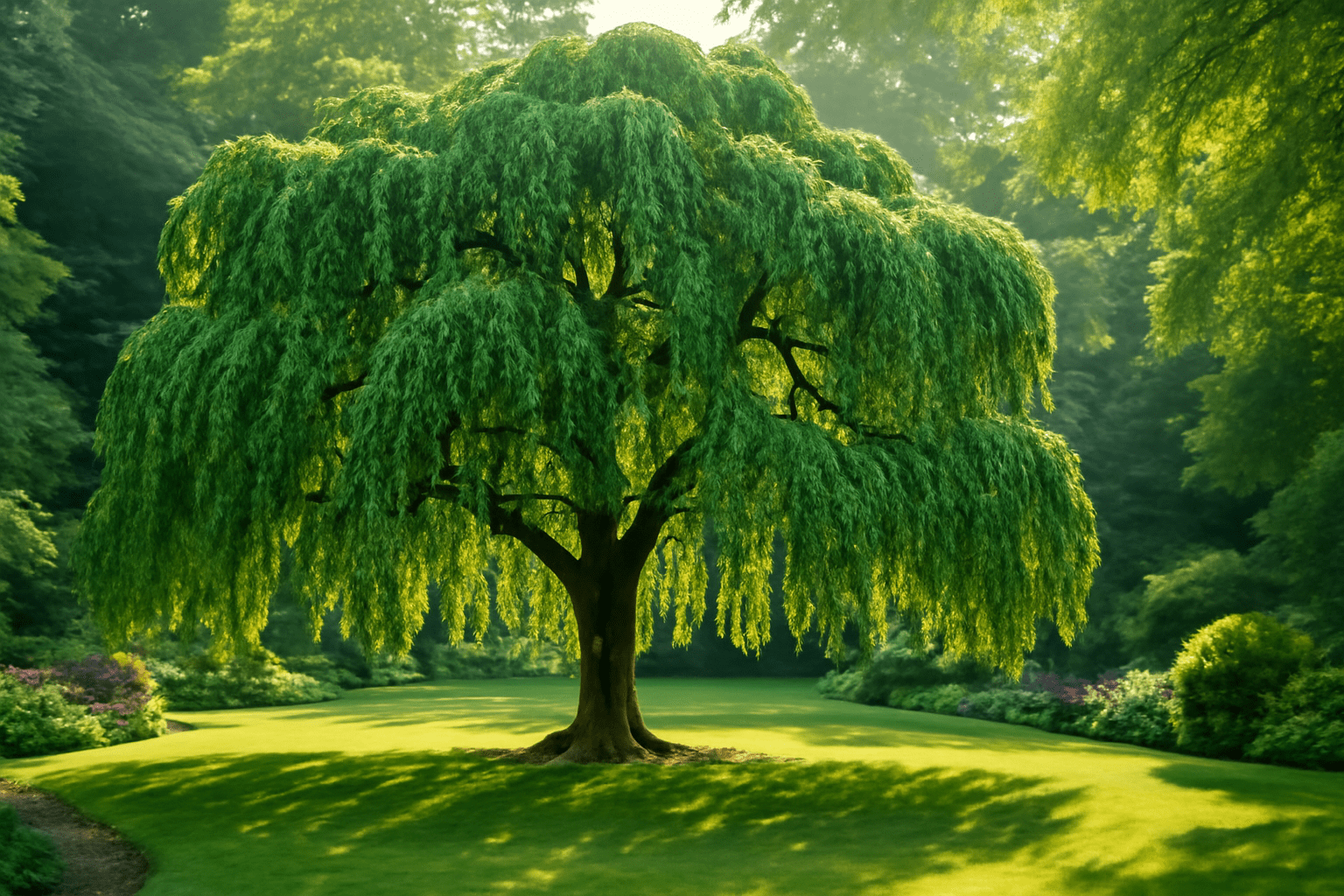
Whether you’re a beginner or a seasoned gardener, understanding the unique needs of the Weeping Beech Tree will help you maintain its beauty and health. With the right attention, it will grow into a magnificent centerpiece that adds elegance to your garden.
Start applying these care tips today, and watch your Weeping Beech Tree flourish into a breathtaking addition to your outdoor space. Happy gardening!
Frequently Asked Questions(FAQ)
How fast does a Weeping Beech Tree grow?
Weeping Beech Trees grow slowly, typically adding 6–12 inches of height per year. With the right care and conditions, it can eventually reach a mature height of 20-30 feet and a spread of up to 20 feet.
What are the best soil conditions for a Weeping Beech Tree?
Weeping Beech Trees prefer well-draining, slightly acidic soil. You can improve soil quality by adding organic matter such as compost, ensuring the tree’s roots have enough nutrients and stability to grow strong.
How often should I water my Weeping Beech Tree?
Water your Weeping Beech Tree regularly, especially in the first few months after planting. Keep the soil consistently moist but not waterlogged. In hot months, water more frequently, but during winter, reduce watering to avoid root rot.
When is the best time to prune a Weeping Beech Tree?
The best time to prune a Weeping Beech Tree is in late winter or early spring, before new growth begins. Focus on removing dead or diseased branches and any growth that disrupts the tree’s graceful shape
Can I grow a Weeping Beech Tree in a container?
Yes, but growing a Weeping Beech Tree in a container requires regular repotting as it matures. Ensure the container is large enough and provides good drainage to support the tree’s root system.
Why are the leaves of my Weeping Beech Tree turning yellow?
Yellowing leaves can be caused by overwatering, nutrient deficiencies, or pest issues. Check soil moisture, apply a balanced fertilizer, and inspect for pests like aphids or scale to address the issue.
How can I protect my Weeping Beech Tree during winter?
To protect your tree in winter, mulch around the base to insulate the roots. You can also wrap the tree with burlap if you live in colder climates to protect it from freezing winds and extreme cold.
Are Weeping Beech Trees prone to pests or diseases?
Yes, Weeping Beech Trees can be susceptible to pests like aphids, caterpillars, and beech scale, as well as diseases like powdery mildew. Regularly inspect the tree, and use organic treatments like neem oil to keep pests under control.







